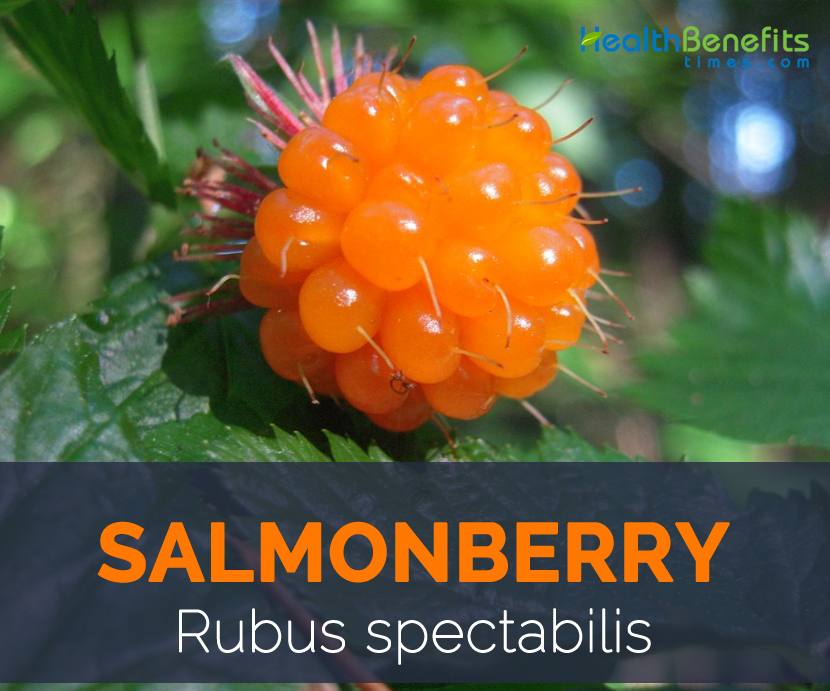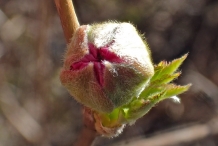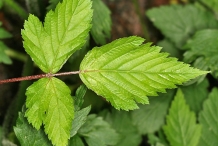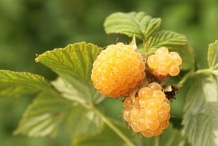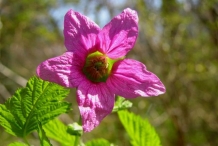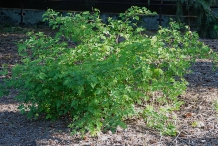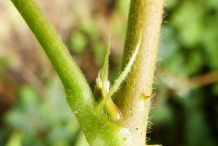| Salmonberry Quick Facts |
| Name: |
Salmonberry |
| Scientific Name: |
Rubus spectabilis |
| Origin |
West coast of North America from west central Alaska to California, inland as far as Idaho |
| Colors |
Yellow to orange to deep red |
| Shapes |
Ovoid or globose, structure of the raspberry, 1.5–2 cm (0.6-0.8 inches) long with many drupelets |
| Taste |
Sweet to slightly sour taste |
| More facts about Salmonberry |
A member of the rose family, the salmon berry plant (Rubus spectabilis) is related to the raspberry, nagoonberry, wild strawberry, thimbleberry and cloudberry. But do not confuse salmon berries with cloudberries, occasionally referred to as low bush salmon berries. The plant is native to the west coast of North America from west central Alaska to California, inland as far as Idaho. Salmon berries were normally picked and eaten raw or mixed with meat or dried salmon. Other parts of the plant, including the young shoots and the bark, were collected and eaten or used for medicinal purposes. Today the berries are made into jams and jellies.
Plant
Salmon berry is a deciduous rhizomatous shrub; 1–4 m (40-160 inches or 1.3-13.3 feet) tall normally grows in moist places and wetlands, and is especially abundant along stream sides and riparian areas. Salmon berry plant has erect or arching, woody stems that are covered with fine prickles. Leaves are usually trifoliate (with three leaflets), 7–22 cm (2.8-8.8 inches) long, and the terminal leaflet are larger than the two side leaflets. The leaf margins are toothed. It has somewhat triangular or teardrop shape with jagged edges. Veins in the leaves form visible furrows. Flowers are 2–3 cm (0.8-1.2 inches) in diameter, with five pinkish-purple petals; they are produced from early spring to early summer. Flowering normally starts from March to June.
Fruit
Salmon berry is actually a member of the rose family and closely related to other brambles such as blackberries and raspberries. Salmon berry are ovoid or globose, structure of the raspberry, 1.5–2 cm (0.6-0.8 inches) long with many drupelets, Fruits are normally yellow to orange to deep red colored and are harvested from June to August. As soon as the fruit ripe it offers delectable aroma and sweet to slightly sour taste which is favorable to several food items.
History
Salmon berry is considered to have originated from the west coast of North America from west central Alaska to California, inland as far as Idaho. It is especially abundant on moist sites in the Coast Ranges of Washington and Oregon, becoming less common inland and to the south. But nowadays it is cultivated throughout the world due to its palatable taste.
Traditional Medicinal uses and benefits of Salmon berry
- The Quinault boil the bark in seawater and the brew is consumed to lessen labor pains and to clean infected wounds, particularly burns.
- An infusion of the roots was used to encourage the appetite and promote weight gain.
- Using the leaves, an infusion was administered to treat anemia, to shorten an overly long menstrual period and to comfort labor pains.
- Dried leaves were chewed to cure diarrhea and stomach upset.
- Poultice made from their leaves is used for dressing burns.
- Decoction of the roots is used for treating various stomach complaints.
- Decoction is also useful for lessening labor pain.
- Bark of these plants is powdered to be used for treating burns and soars.
- Poultice made from the bark is applied to ease tooth ache and to cure open wounds.
How to Eat
- Traditionally, the berries were eaten with salmon or mixed with oolichan grease or salmon roe.
- Salmon berries are frozen, canned, or made into jams and jellies
- Some Nuu-chah-nulth people boiled the leaves with fish as a flavoring.
- Kaigani Haida used the leaves to line baskets, wipe fish, and cover food in steaming pits.
- These sweet berries can be eaten raw.
- They are often used for flavoring candies.
- Jams and jellies are made from the Salmon berry following simple recipes.
- They are also used for making wine and other alcoholic beverages.
- Young shoots of these plants are eaten both raw and cooked like asparagus.
- Sprouts can be cooked with salmon or many other fishes.
- Leaves are sometimes used as substitute for tea.
Other Facts
- Fruits are occasionally used for obtaining a bluish or purple dye.
- The plants of this species are often grown as ornamental plants.
Precautions
- It is advisable to avoid consuming these fruits in any form during pregnancy as it may cause some complications.
How to Clean and Store
Because they are delicate, salmon berries should be handled as little as possible. Unless they are very dusty, do not wash. Pick through the berries to remove any leaves or debris. For best flavor, eat the raw berries the same day they are picked.
Salmon berries may be stored in the refrigerator for a brief period of time. They will not keep well more than two to three days. Store cleaned berries in a shallow container to prevent crushing. Place the covered container in the refrigerator.
References:
https://en.wikipedia.org/wiki/Rubus_spectabilis
https://plants.usda.gov/plantguide/pdf/cs_rusp.pdf
http://www.nwplants.com/business/catalog/rub_spe.html
https://www.uaf.edu/files/ces/publications-db/catalog/hec/FNH-00119.pdf
http://www.naturec.org/blog/edible-nature-salmonberries-are-here/
http://pnwplants.wsu.edu/PlantDisplay.aspx?PlantID=280
http://dendro.cnre.vt.edu/dendrology/syllabus/factsheet.cfm?ID=253
http://www.borealforest.org/world/herbs_shrubs/salmon_berry.htm
http://www.pugetsound.edu/academics/academic-resources/slater-museum/exhibits/terrestrial-panel/salmonberry/
http://www.inaturalist.org/taxa/47543-Rubus-spectabilis
http://www.womenfitness.net/salmonberries.htm
http://www.onlyfoods.net/salmonberry-rubus-spectabilis.html
Comments
comments


